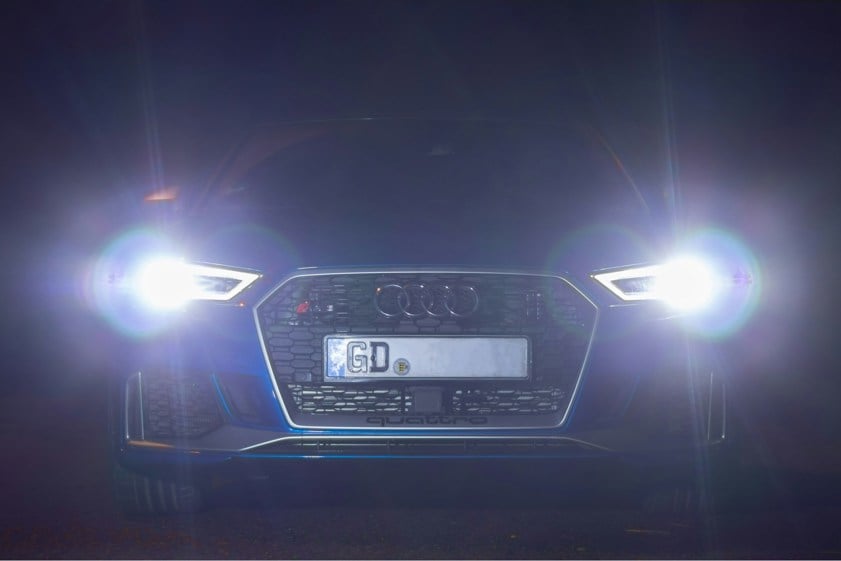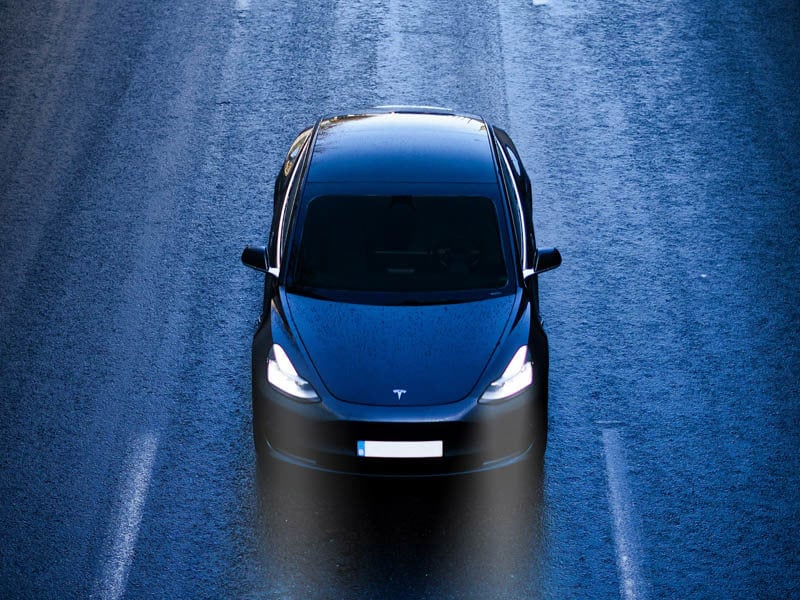
Have you ever been blinded by oncoming headlights and thought, “Are headlights too bright these days?” Well, don’t worry, you’re not alone.
Modern headlights have evolved significantly over the years, with manufacturers striving to achieve improved visibility, energy efficiency, and automated systems that help out drivers.
However, whether this has actually been achieved is up for debate.
In this guide, we’ll break down the different types of headlights on a car, explore the latest advancements in automatic headlights, and tackle common headlight issues such as glare and brightness concerns. We discuss:

One of the things you need to know before getting a new car is the different types of headlights. Gone are the days of simplicity, where every car would come with a similar headlight setup.
There are several types of headlights, each oriented towards different drivers and having their own benefits. Here are the options:
- Halogen - Halogen headlights are the most common and affordable type and are found in many older and budget-friendly vehicles. They produce a warm yellowish light that’s typically associated with headlights, but it’s worth noting they have a shorter lifespan and are less efficient than modern alternatives.
- Xenon - Xenon lights became popular in the 90s and come with a cool blue/white light. They’re found in premium and mid-range vehicles and are more energy efficient but have been known to cause glare for other drivers.
- LED - LED lights are standard in most new cars due to their long lifespan and efficiency. They offer a sharp and clear light that’s especially useful at nighttime. However, like xenon lights, glare can be an issue for other drivers.
- Laser - Laser headlights are found in advanced models, and lasers are used to create a white light that’s reflected onto the road. They’re much brighter and more advanced than normal headlights and can help create drastically improved visibility in poor conditions.
- Matrix - Are matrix headlights the future of car lights? A high-tech innovation in automatic headlights, they use multiple LEDs to adjust brightness dynamically or can even turn off individual sections of lights when detecting oncoming traffic. Pretty neat.
Headlight type | Brightness | Lifepsan | Glare risk | Energy efficiency |
|---|---|---|---|---|
Halogen | Low | Short | Low | Poor |
Xenon | High | Medium | High | Good |
LED | Very high | Long | Medium | Excellent |
Laser | Ultra high | Very long | High | Excellent |
Matrix | Adaptive | Long | Low | Excellent |
Dipped headlights
Dipped headlights, also called low beam headlights, are the most commonly used headlights. Aimed downwards to prevent dazzling other drivers, they are used in normal night time driving and poor weather conditions.
You can use dipped headlights at night on a road with street lights, in poor weather conditions such as rain, fog, and snow, and when approaching oncoming traffic or driving behind another vehicle.
Full beam headlights
Designed for dark, unlit roads when extra visibility is needed, full beam headlights are much brighter than dipped headlights and showcase a greater field of view.
It’s worth noting that you should turn off your full beams when another vehicle is approaching. Although there’s no specific offence for not doing this in the highway code, you could be charged with driving without care and attention if it leads to an accident.
The best place to use full beam headlights is when driving down a country lane or unlit road at night time.
Automatic headlights
Many modern cars are now fitted with automatic headlights. Through a range of sensors, the headlights can turn on when it gets dark and can also switch between dipped and full beams automatically when detecting oncoming traffic.
Daytime running lights
Daytime running lights are another new technology that helps increase visibility during the day. They do what they say on the tin, and can be used during the day to improve visibility.
They should come on automatically when you start your engine, and will turn off when you switch your headlights on or turn off the engine.
Since 2011, daytime running lights have been a legal requirement for all new passenger cars and small vans in the UK.

Are headlights too bright?
This is a question that’s been gaining a lot of attention in recent years. According to a study by the RAC involving 2,000 drivers, 89% believe that some car headlights are excessively bright.
Modern LED and xenon headlights are much brighter than old halogen bulbs, and while this drastically improves driver visibility, it can also lead to discomfort in oncoming traffic.
To reduce headlight brightness issues, we’d recommend adjusting your headlight alignment, keeping your windshield clean, using anti-glare coatings on the windscreen, and avoiding looking directly at the light (where possible).
Headlight glare issues
A consequence of bright headlights is glare, which is no fun for a driver and can increase the risk of having an accident. It’s a common issue at night, especially on roads without street lighting.
To prevent glare, ensure your lights are properly positioned, turn off the full beam if you see a car approaching, and ensure your windows and windscreen are clean.
Cloudy headlights
Over time, headlights can become cloudy or fogged up, reducing their effectiveness.
To fix it, use a headlight restoration kit or check for moisture build-up inside the headlight housing.
Flickering headlights
Flickering headlights are mainly associated with halogen bulbs and are caused by battery or wiring issues.
If you’ve got a flickering headlight, we’d recommend taking the car to your nearest VAT-registered garage.
Modern car headlights are a technology that has drastically improved over the years, but they also come with challenges. From glare issues to increasing concerns over brightness, there are a few things you need to be aware of.
Remember:
- Use dipped headlights for everyday driving, while full beam headlights are for unlit roads
- Automatic headlights and matrix headlights help reduce glare
- Common issues like brightness, glare, and flickering can be fixed
Have you noticed an increase in headlight glare when driving? For all things car-related, check out our blog, such as The Future of Petrol and Diesel Cars and Do You Really Need an SUV?
We are also one of the UK’s largest car leasing brokers, offering a range of affordable leasing deals to suit your every need. For more information, call one of our experts on 0345 811 9595.

